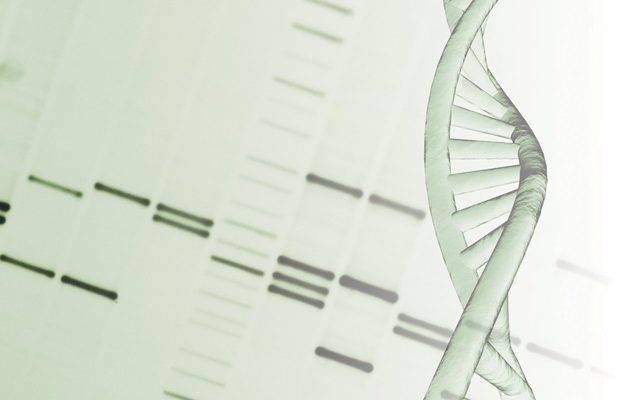New Cornell research is providing a fresh view into the ways a common chemotherapy agent, etoposide, stalls and poisons the essential enzymes that allow cancer cells to flourish.
The findings, from the lab of Michelle Wang, the James Gilbert White Distinguished Professor of the Physical Sciences and Howard Hughes Medical Institute Investigator in the College of Arts and Sciences, will advance the study of a range of cancer inhibitors. The techniques developed by the group will also enable the creation of sensitive screening tools for identifying drug mechanisms that can improve patient treatment.
The group's paper, "Etoposide Promotes DNA Loop Trapping and Barrier Formation by Topoisomerase II," was published Jan. 30 in Nature Chemical Biology. The co-lead authors are research specialist Tung Le and postdoctoral researcher Meiling Wu.
For 40 years, etoposide has been a trusted chemotherapeutic for treating a variety of cancers. Etoposide succeeds by targeting Type IIA eukaryotic topoisomerases, enzymes – also known as topo IIs – that enable the replication of cancer cells.
At the center of that replication process are the long, entangled, helical coiled-strands of DNA. In order for cancer to spread, these strands need to be untangled, rotated and copied by motor proteins. Topo IIs are well-suited for the job. They perform an elaborate kind of rope trick that relaxes the supercoiled DNA by cutting it, very quickly passing another DNA strand through its middle, and then reconnecting the cut DNA back together. All of that is done without damaging the DNA's delicate genetic structure – an incredible, and incredibly fast, feat of biology that happens in the body roughly 300 billion times a day.
Etoposide's great virtue is that it can stabilize a DNA double-stranded break before anything is reconnected, and thereby prevents the cancer cell from replicating. However, the intricacies of how etoposide interacts with DNA's structure have remained murky.
We normally ask: What is the best way to study molecular machineries that take place on DNA? To understand how those enzymes work, we want to mimic what might be happening in the cell. Motor proteins pull on the DNA or apply a force on the DNA. So we said, OK, we can apply a force and see what happens."
Michelle Wang, the James Gilbert White Distinguished Professor of the Physical Sciences and Howard Hughes Medical Institute Investigator in the College of Arts and Sciences
Antibodies eBook

Wang's lab used three different single-molecule manipulation techniques to observe etoposide's effect on three topo IIs, which were provided by collaborators led by professor James Berger of Johns Hopkins University: yeast topoisomerase II, human topoisomerase II alpha and human topoisomerase II beta.
"DNA topology, conceptually and in terms of torsional mechanical properties, is really hard for people to grasp," Wang said. "There were very few ways to study it. But we happen to have just the right tools. And the reason we have the right tools is because for the last 20 years, we've been working on developing them. These tools and this problem just happened to converge at the right time."
First, the researchers used optical tweezers to stretch DNA into various configurations, demonstrating how etoposide compacts, releases and breaks it, and creates DNA loops. This loop-trapping behavior surprised everyone as it revealed a new impact of etoposide that was not previously known. It implies that etoposide could promote topo II to significantly alter DNA structure and topology in vivo.
Then the team used optical tweezers to unzip double-stranded DNA into two single strands for high-resolution mapping of protein interactions with the DNA, and so mimicked the motor removal of a bound protein. The findings suggest that etoposide could convert topo II into a strong roadblock of DNA-processing machineries.
Their third technique is a version of magnetic tweezers in which they twisted DNA with a bound topo II and watched the topo II relax the DNA at a steady rate. When they added etoposide, they found the chemical staggered this pattern, introducing pauses that correlate with the trapping of supercoiled loops.
By capturing the different ways etoposide enhances these actions and interferes with topo II function, the researchers now have a quantitative system for characterizing how other topoisomerase drugs behave.
"I think this gives us a set of tools that would allow us to study many different kinds of topoisomerases and other kinds of drugs in a very comprehensive way," Wang said. "Everything we do mimics what happens in vivo. We just do it in a mechanically controlled fashion. This is why it's so powerful."
Co-authors include doctoral student Neti Bhatt and research specialist James Inman; and James Berger and Joyce Lee of Johns Hopkins University School of Medicine.
The research was supported by the National Institutes of Health and the Howard Hughes Medical Institute.
Cornell University
Le, T.T., et al. (2023) Etoposide promotes DNA loop trapping and barrier formation by topoisomerase II. Nature Chemical Biology. doi.org/10.1038/s41589-022-01235-9.
Posted in: Molecular & Structural Biology | Cell Biology | Biochemistry
Tags: Cancer, Cell, Chemotherapy, CRISPR, DNA, Drugs, Genetic, in vivo, Medicine, Molecule, Protein, Research, Yeast
Source: Read Full Article
